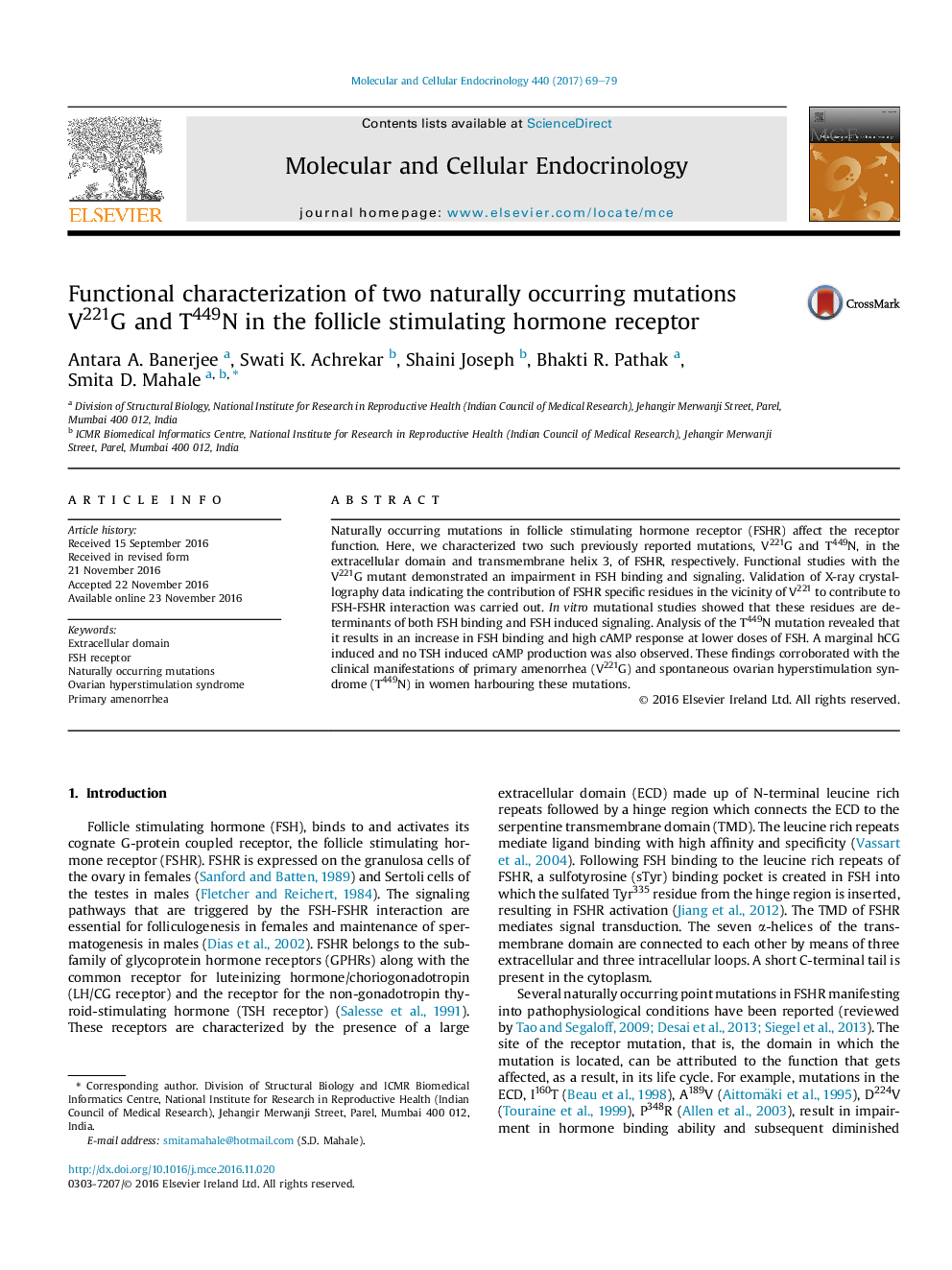| Article ID | Journal | Published Year | Pages | File Type |
|---|---|---|---|---|
| 5534102 | Molecular and Cellular Endocrinology | 2017 | 11 Pages |
â¢Ligand binding and signaling ability tested in vitro for FSHR mutants V221G and T449N.â¢Primary amenorrhea seems to be due to reduced FSHR activity in the V221G mutation.â¢FSHR specific residues around V221 interact with FSH and are crucial for signaling.â¢sOHSS reported by our group in a pregnant woman is due to T449N mutation in FSHR gene.
Naturally occurring mutations in follicle stimulating hormone receptor (FSHR) affect the receptor function. Here, we characterized two such previously reported mutations, V221G and T449N, in the extracellular domain and transmembrane helix 3, of FSHR, respectively. Functional studies with the V221G mutant demonstrated an impairment in FSH binding and signaling. Validation of X-ray crystallography data indicating the contribution of FSHR specific residues in the vicinity of V221 to contribute to FSH-FSHR interaction was carried out. In vitro mutational studies showed that these residues are determinants of both FSH binding and FSH induced signaling. Analysis of the T449N mutation revealed that it results in an increase in FSH binding and high cAMP response at lower doses of FSH. A marginal hCG induced and no TSH induced cAMP production was also observed. These findings corroborated with the clinical manifestations of primary amenorrhea (V221G) and spontaneous ovarian hyperstimulation syndrome (T449N) in women harbouring these mutations.
